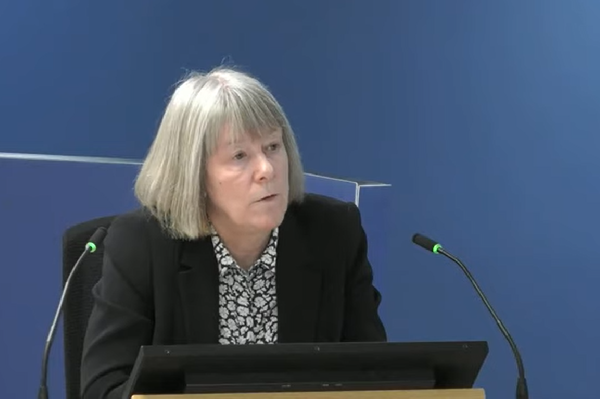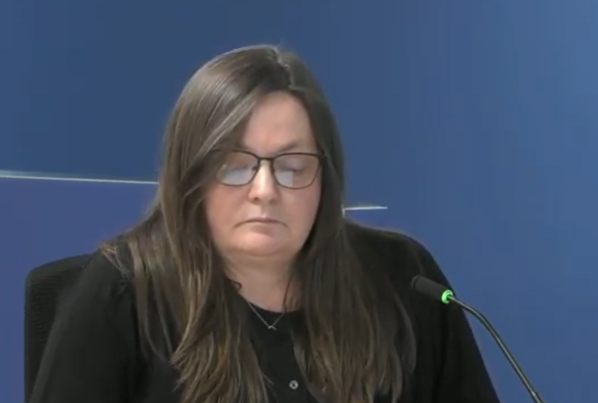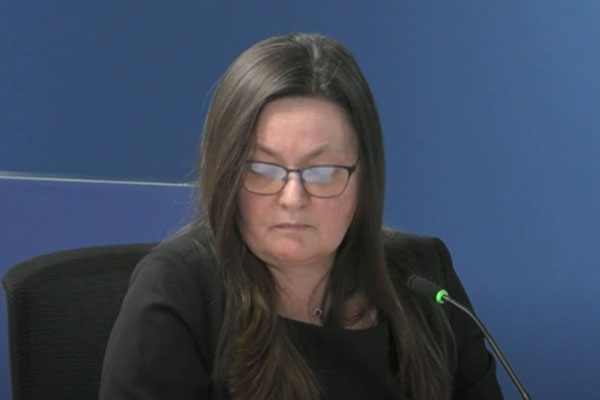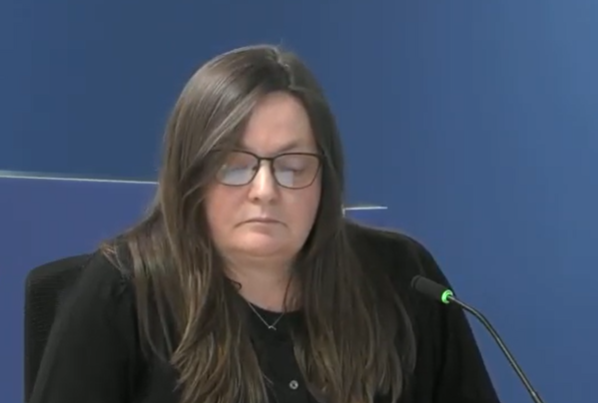‘Catastrophic’ fire test in 2002 meant government should have had ‘no doubt at all’ that Grenfell cladding should not be used
The “catastrophic” result of an official cladding test meant the government was “in no doubt at all” that the violently combustible material later installed on Grenfell Tower “should never ever” be used on tall buildings from as early as 2002, the inquiry into the blaze heard today.
As the inquiry has previously heard, the polyethylene-cored aluminium composite material (ACM) cladding was subjected to a government-funded test in summer 2001 and failed horrendously, with 20-metre flames appearing after just five minutes.
The results of this test were delivered to officials in September 2002, but no warning was issued to the industry and a fire standard which appeared to permit its use was not removed from official guidance, despite what was described today as “an immediate and present risk to life”.
It means the government knew of the risks of ACM 15 years before the fire at Grenfell Tower killed 72 people, and 12 years before the decision to clad its walls in the material. The inquiry has already established that the cladding panels were the “primary cause” of the rapid fire spread.
Dr Debbie Smith, former managing director of the Building Research Establishment (BRE), which was contracted by the government to carry out the testing, today told the inquiry it was up to the department that contracted them to release the results.
But the tests were withheld, even following the fire at Grenfell Tower, and first emerged through a leak to the BBC late last year.
Asked whether her view was that the results meant the government “was in no doubt at all that ACM panels with a PE core should never ever be used [on buildings] above 18 metres” from September 2002 onwards, she said yes, providing they believed the new testing method was representative.
The testing was commissioned following two fires which spread rapidly up the outside of high-rise buildings in 1991 in Knowsley Heights, Merseyside, and in 1999 in Garnock Court, Irvine, Scotland.
These fires resulted in an investigation by MPs, who recommended the government should require all cladding materials to be non-combustible or justified through the use of a large-scale test.
The BRE was then contracted by the government to carry out a “comprehensive survey of the UK building stock” to establish common materials for generic testing.
But this survey only elicited responses from 13 local authorities, covering a tiny proportion of the UK market.
“Do you agree that this is really quite a long way from the comprehensive survey of the UK building stock that was proposed in the bid for this contract?” asked lead counsel to the inquiry Richard Millett QC.
Dr Smith explained that it was “very difficult to get busy people to see the need to respond” to surveys of this nature and added that many local authorities “probably didn’t know the answers”.
Following the survey, the BRE was commissioned to run 14 tests on a variety of different cladding systems, which the survey had suggested were in use. This included one comprising an ACM panel with a polyethylene core.
Asked whether this was included because it was believed to be in “common use” in the country at the time, Dr Smith said she did not know other than that it had been “flagged up in the building survey”.
Records of the ACM test, carried out on 18 July 2001, showed what Mr Millett described as “catastrophic escalation” of the fire, with molten aluminium dripping off the face of the panels after three minutes and flames extending 20 metres upwards after five minutes.
This was double the size of the nine-metre rig – and signified a dramatic failure. The test was supposed to run for 30 minutes, but was halted after five minutes and 45 seconds due to concerns for the safety of the testing centre.
While 11 of the 14 systems tested by the BRE under the programme also failed, none of the failures were as fast or as serious as the ACM.
The BRE then summarised the findings of the testing in a report for government in September 2002.
“Can we be clear about one thing: that your evidence to the inquiry is that from the middle of September 2002, the government was in no doubt at all that ACM panels with a [polyethylene] core should never ever be used [on buildings] above 18 metres?” asked Mr Millett.
“Within that context of [the new testing methodology being developed], yes,” Dr Smith replied. “So the extent to which they were prepared to accept [that testing] as being representative.”
The ACM panel used by the BRE in the test was rated ‘Class 0’, meaning it was accepted as being suitable for high-rise buildings under official guidance in Approved Document B at the time.
But its report on the testing to the government did not spell out the urgent need for changes, with the conclusion simply stating that the “aluminium sheeting material” satisfied Class 0, but “proved to be one of the worst performing products” in the large-scale test. It added that “these issues require further consideration”.
“So this oblique, rather loose recommendation… you thought that was enough to spell out to the government that the use of ACM panels over 18 metres presented an immediate and present risk to life, did you?” asked Mr Millett.
“That they needed to consider the issues associated with all of this, yes,” Dr Smith replied.
“You see Dr Smith, what you don’t do in this report is to spell out in big letters… that unless the government does something now about ACM panels over 18 metres, people will die. I mean, that’s clear isn’t it?” asked Mr Millett.
“Well it was not put in those terms. I haven’t seen any BRE report that ever speaks in those terms,” said Dr Smith. “Because our role is to present the technical evidence and the technical facts and the data and then to signal what we think needs to be considered. And then it’s up to the department… to decide what they consider and what they want to do going forward.”
Asked whether the BRE had ever issued any warning to the wider industry about the “obvious danger to life” presented by ACM and evidenced by these tests, Dr Smith said this was a matter for the department.
Anthony Burd, the civil servant to whom the results were delivered, is due to begin his evidence on Wednesday.
A change to the wording of the guidance in 2006 required the use of the more rigorous ‘limited combustibility’ fire standard for insulation and what it referred to as “filler material”.
The government and Dr Smith have claimed since the fire at Grenfell Tower that this section was supposed to cover the core of an ACM panel, but this was never made explicit before the blaze.
Class 0 remained the standard for ‘external wall surfaces’ in Approved Document B until it was amended in 2018, more than a year after the Grenfell Tower fire.
The BRE and the government would go on to be warned by the industry in July 2014 that ACM panels were in wide use due to many products claiming to meet this standard.
They were asked to provide a frequently asked question to clarify that the product – by then linked to huge fires in the Middle East, France, Australia and elsewhere – should not be used in the UK, but failed to do so.
Prior evidence from Arconic, the manufacturer of the ACM sold for use on Grenfell Tower, is that they viewed England as a “market” for the combustible cladding thanks to its looser rules than much of the continent.
The inquiry continues, with further evidence from Dr Smith tomorrow.
Sign up for our weekly Grenfell Inquiry newsletter
Each week we send out a newsletter rounding up the key news from the Grenfell Inquiry, along with the headlines from the week
Already have an account? Click here to manage your newsletters












